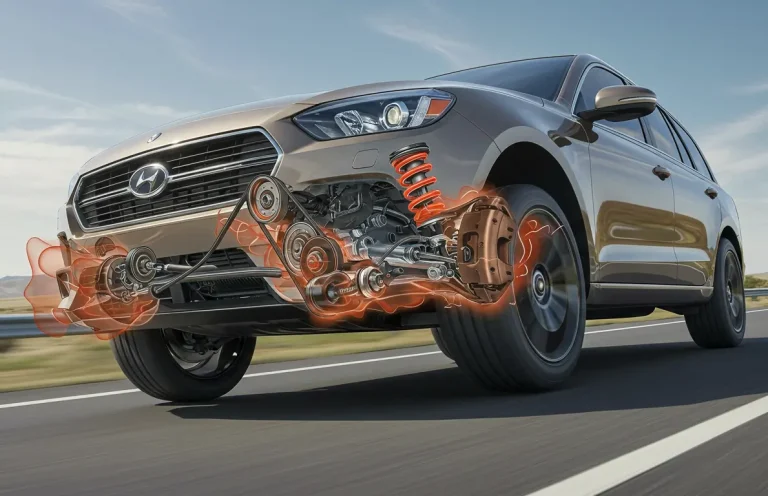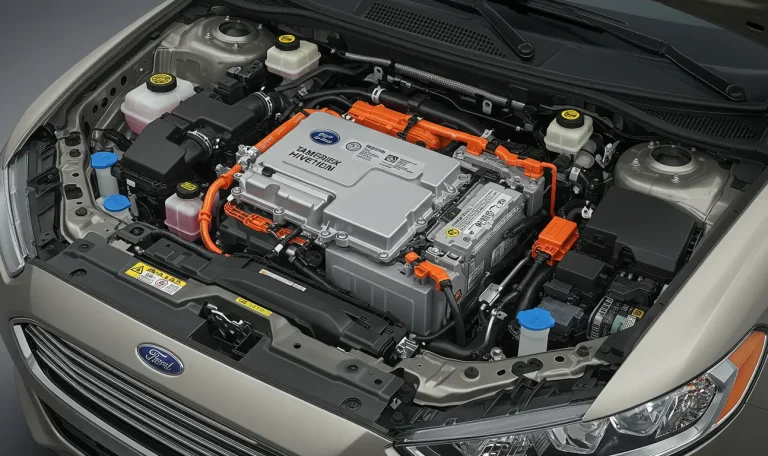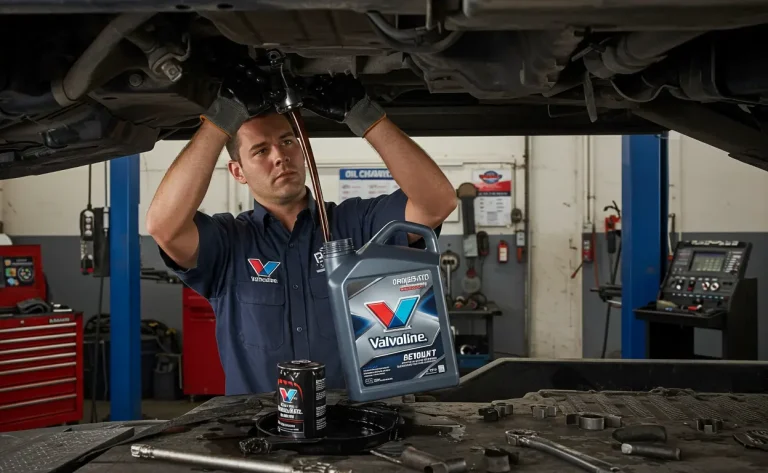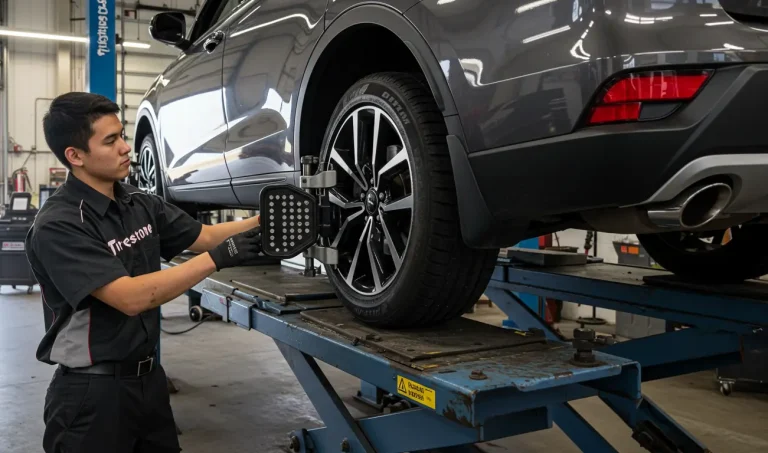Ford Hydroboost Requires How Much Pressure?
If you’ve ever slammed on the brakes in a heavy Ford truck and marveled at how quickly it came to a stop, chances are you have the Hydroboost braking system to thank. This advanced system uses hydraulic pressure, not vacuum, to help you stop safely — especially when you’re towing, hauling, or simply rolling with a fully loaded ride.
But here’s the real question:
How much pressure does the Ford Hydroboost need to work correctly?
Let’s break it down in a way that’s easy to understand, even if you’re not a gearhead.
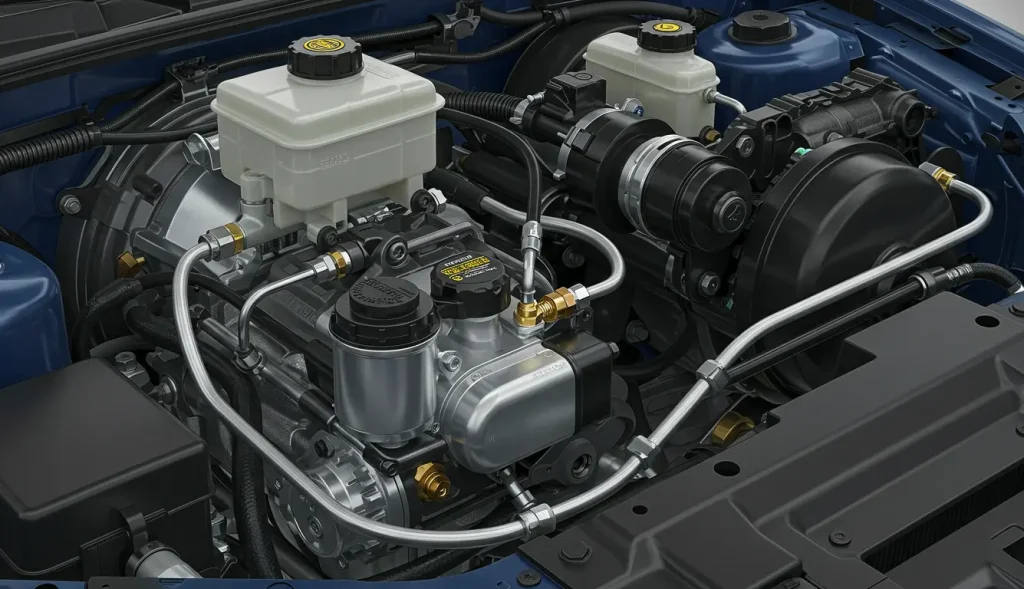
What Is the Hydroboost System?
Think of the Hydroboost system as the strongman of brake assist systems. Instead of using engine vacuum like traditional setups, it taps into your vehicle’s power steering pump for a supply of hydraulic pressure.
If you’ve ever driven a Ford F-350, Super Duty, or even an older Mustang, you’ve likely felt the solid braking response of a Hydroboost system.
How Does It Work?
Here’s a simple breakdown:
- You press the brake pedal.
- The Hydroboost unit kicks in, using hydraulic pressure from the power steering pump.
- This pressure amplifies your foot’s effort, sending it to the master cylinder.
- The result? Quick and powerful braking with minimal pedal effort.
Anecdote:
My neighbor Jim has a 2002 Ford Super Duty that he uses to tow a fifth-wheel trailer every summer. A few years back, he was descending a steep mountain road when a deer leaped out. Thanks to his Hydroboost system, he stopped just in time — even with a full load behind him. “That Hydroboost saved my truck — and maybe that deer’s life,” he laughs.
How Much Pressure Does a Ford Hydroboost Require?
Now, let’s talk numbers — but don’t worry, I’ll keep it simple.
✅ Standard Pressure Range
The Ford Hydroboost pressure system typically requires between 2,000 to 2,500 PSI (pounds per square inch). This is significantly higher than traditional vacuum-assisted brake systems, which usually operate between 800 to 1,400 PSI.
| System Type | Typical Pressure Range |
|---|---|
| Ford Hydroboost | 2,000 – 2,500 PSI |
| Vacuum Power Brakes | 800 – 1,400 PSI |
| Disc Brake Proportioning Valve | 1,200 PSI |
| Drum Brakes (Lockup) | 600 PSI |
Why Does Pressure Matter?
If the pressure is too low, you’ll experience:
- A soft or spongy pedal
- Longer stopping distances
- A general feeling that something just isn’t right
If the pressure is too high (beyond what components are rated for), you risk damaging parts like hoses, seals, or the Hydroboost unit itself.
Also Read: Ford Mustang HID Headlight Wire Diagram
Step-by-Step: How to Measure Your Ford Hydroboost Pressure
Here’s how you can check the pressure on your Ford Hydroboost system:
What You’ll Need:
- A hydraulic pressure gauge (rated for at least 3,000 PSI)
- Basic hand tools
- A clean workspace
- Safety gear (gloves and eye protection)
Step-by-Step Guide:
- Locate the test port on your Hydroboost system (usually near the power steering lines).
- Attach the pressure gauge securely.
- Start the engine, and let it idle.
- Press the brake pedal firmly while watching the pressure gauge.
- Record the pressure reading — it should fall between 2,000 and 2,500 PSI.
How to Adjust Hydroboost Pressure
If your pressure isn’t quite right, here’s how you can fix it:
1. Modify or Upgrade the Power Steering Pump
Sometimes the pump just isn’t supplying enough pressure. You can:
- Install a higher output pump
- Upgrade to a performance Ford F-450 pump, which often has a higher pressure output
2. Replace or Resize Hydraulic Lines
Switch to larger AQP hoses to increase fluid flow. This can help maintain pressure under heavy braking.
3. Upgrade Brake Components
If you’ve installed larger tires or added weight, upgrade your brake calipers and rotors to handle the extra load. This ensures the pressure is being used effectively.
Pro Tip:
Use high-performance fluid like Mobil 1 ATF to keep things running smoothly and avoid cavitation.
Signs Your Hydroboost System Has Pressure Problems
It’s always better to catch issues early. Here’s what to look for:
| Symptom | Possible Cause |
|---|---|
| Soft brake pedal | Low pressure or air in system |
| Brake pedal sinks slowly | Leaks or worn seals |
| Brake kickback | Air in lines or weep hole leak |
| Hard steering & poor brakes | Failing power steering pump |
Diagnose pressure problems the moment you feel something off.
Common Hydroboost Pressure Fixes
If you’ve diagnosed a pressure issue, here are some quick fixes:
Fluid Flush
Flush your system using 3 quarts of Mercon V or an approved equivalent. Dirty fluid is often the culprit behind soft brakes or steering issues.
Seal Replacement
Leaking at the weep hole? Replace the internal seals using a seal kit ($30-$35). Just be sure to get the right one for your model.
Upgrade or Replace Components
- Hydroboost units from junkyards (like a Ford F-450) cost around $250
- A new compression fitting costs only $5
- Even a plastic reservoir from an F-450 pump is under $40
Maintenance Tips to Keep Your Hydroboost Healthy
Routine maintenance is key to keeping your system strong.
Regular Inspections
- Look for leaks in hoses or fittings
- Check fluid levels regularly
- Watch for fluid aeration or cavitation
Make sure your fluid temperature stays between 120°F to 160°F — never over 180°F!
Flush and Replace Fluids
Flush and replace the fluid at least once per season, especially if you:
- Tow trailers
- Drive off-road
- Carry heavy loads
Use premium fluid like PSC 715 for best performance.
Why Upgrade Your Ford Hydroboost System?
Still on the fence about upgrading or maintaining your Hydroboost system?
Here’s why it’s worth it:
- Improved brake response
- More control during towing or heavy loads
- Extended component life
- Increased vehicle safety
Whether you’re daily driving a Mustang or off-roading in a lifted F-350, Hydroboost upgrades give you the stopping power you need — when it matters most.
Anecdote:
I once helped a friend upgrade his 1999 Ford Ranger using parts from an older F-350. He was skeptical at first. After the swap, he called me from the road, laughing: “Dude, it’s like I installed rocket boosters for my brakes!”
Conclusion: Know Your Pressure, Drive With Confidence
Understanding how much pressure a Ford Hydroboost system needs — and how to measure and maintain it — is one of the smartest moves any Ford truck or SUV owner can make.
To recap:
- Ideal Hydroboost pressure is 2,000 – 2,500 PSI
- Check and adjust it regularly for top performance
- Upgrade components if you’ve added weight or bigger tires
- Maintain your system with high-quality fluid and parts
By taking the time to understand and care for your Hydroboost system, you’ll enjoy safer, smoother, and more confident driving — no matter what road you take.
Check Out: Ford Fusion Hybrid Battery Replacement Cost

